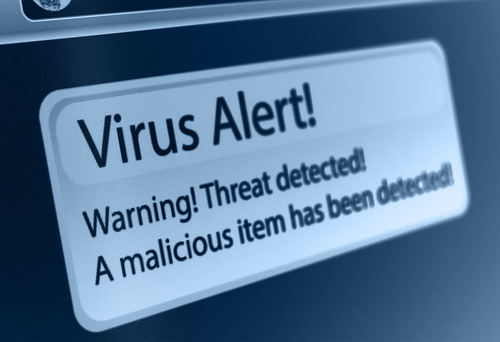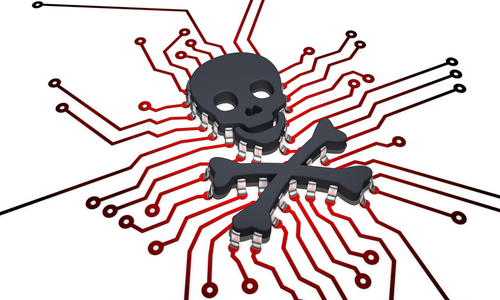September 23rd, 2013

Virtualization in the IT world means creating a virtual version of something. You can create a virtual server, virtual hard drive and more. The possibilities are nearly limitless and allow businesses to use their resources more efficiently. Brian Proffitt, of ReadWrite, explains that virtualization is also useful for fighting malware infections. This new way of thinking about security allows you to protect all of your devices, from smartphones and tablets to servers and PCs.
One method of using virtualization to avoid malware is to create a virtual version of your infected machine. This doesn’t get rid of the infection, but gives you a working version of your computer. It takes storage space and time, however.
Microvirtualization is another option. It virtualizes only one process of an operating system and is useful in keeping malware at bay.
With microvirtualization, you can virtualize the multiple processes needed to surf the internet. A single, virtualized process is programmed with a set of rules, which makes the process shut down if it encounters anything fishy, like malware trying to infect it. The process can even be frozen once the malware starts running, which allows security experts to analyze it.
The main key here is that malware is trapped immediately within a virtual process. It is never given the chance to infect your machine or begin to track your data. With micro-VMs, current forms of malware become obsolete.
For now, virtualizing every process of an application is not realistic due to limitations in technology. But, improvements are constantly being made and some use of micro-VMs is already possible.
To discover the latest in cyber security options for your home or business, contact Geek Rescue at 918-369-4335.
September 23rd, 2013

The goal of most cyber criminals is to gain access to potentially valuable information from whatever source is the easiest to steal from. This means regardless of the size of your business, a hacker will target you if your security is lacking. This also means that regardless of whether or not you think you have information that could be valuable, a hacker will target you.
Small businesses are particularly at risk because many don’t adequately budget for network security measures. Danielle Walker, of SC Magazine, reports that saving money on your security infrastructure usually winds up costing you.
The 2013 Small Business Technology Survey, conducted by the National Small Business Association, found that small companies lost around $8,700 after being the victim of a cyber attack. Of the nearly 900 businesses that responded to the survey, 44-percent say they had been attacked and infected with malware.
These attacks cause downtime, prevent employees from working and prevent your company from providing service to customers. They also affect a company’s credibility and sometimes lead to identity theft of customers.
Despite these alarming statistics, business owners are putting less emphasis on security now than they were three years ago. Although there is no way to be completely secure, businesses without adequate security make themselves an easy target.
Many companies that experience a cyber attack are unable to recover and close their doors for good. This is avoidable by planning ahead and having a robust security infrastructure and a plan for overcoming a malware attack.
For help improving your company’s security, contact Geek Rescue at 918-369-4335.
September 20th, 2013

Malware infects your computer and affects its performance. Or is that a computer virus? Are they the same thing?
Lincoln Spector, of PC World, writes that the difference between malware and virus is ambiguous at best. Technically, a virus is a form of malware. That’s not always the way it’s used today, however.
Not only is a virus a form of malware, but trojans, worms and rootkits are also. Malware is classified as a piece of code that infects your computer and performs actions independent of the user, which is you. To simplify, it’s something that has found a way onto your computer, by way of a download, upload, or a number of other ways, and is doing things without your knowledge, like monitoring your activity, harvesting data or spamming your address book.
A virus falls into the malware category because it infects your computer and is capable of performing independent actions. A virus infects an existing file and corrupts it. But, there aren’t many viruses around today because they’re seen as inefficient by cyber criminals.
The reason the terms malware and virus have become interchangeable is because computers and malicious programs existed before ‘malware’ became a term. So, whenever anyone spotted one of these malicious programs and in the 1980’s and 90’s, they referred to them as a virus. That’s been a hard habit to break even as we now understand the differences between unique forms of malware.
While your security software is called ‘antivirus’, it likely protects you from a variety of malware. To simplify security, call Geek Rescue at 918-369-4335. We understand malware and viruses and, more importantly, know how to keep you safe and secure.
September 20th, 2013

Before you start playing with your new iPhone 5s or 5c, take a moment to adjust the privacy settings. Even if you don’t have a new iPhone, it’s a good idea to check that your phone’s settings are set to your liking. For instance, upgrading to iOS7 on your existing iPhone can reset your settings, so checking on them once in awhile is a good idea.
Jason D. O’Grady, of ZDNet, has some suggestions for how your privacy settings should look. These will keep your iPhone from allowing too much access to 3rd party apps and keep you from sharing too much with potential hackers.
Most of the apps you download want to access your location. Few, however, truly need that access. To limit how you share your location, go to ‘Settings’ then ‘Privacy’ then ‘Location Services’. Scroll all the way to to the bottom to find ‘System Services’. Here you’ll be able to turn on notifications for anytime an app uses your location. That way, if you get a notification from an app that shouldn’t be accessing your location, you can go turn off that app’s capability.
This is code for ‘let Apple track my activity’. To turn this option off, touch ‘System Services’ from the screen you were just on. Turn off ‘Diagnostics and Usage’ to no longer send data to Apple, which they say is to help improve iOS. On this same screen, you’ll want to disable ‘Location Based iAds’, which is exactly what it sounds like.
Finally, go to ‘Safari’ in your ‘Settings’ menu. Make sure that ‘Do Not Track’ is turned on so you’ll be able to surf anonymously. While you’re here, check that ‘Block Pop-Ups’ is also turned on.
These quick adjustments to your settings help to improve your iPhone’s privacy. Improving privacy settings keeps your phone from sending data to Apple, advertisers and others who don’t need to have access to it.
Privacy settings don’t keep you secure from malware and other attacks, however. To improve the security on your smartphone, or to get rid of malware already on it, call Geek Rescue at 918-369-4335, or bring your device in to one of our locations.
September 19th, 2013

Regardless of how many safeguards you have in place, your company’s data is never completely secure. Security tools like antivirus software and firewalls are helpful, but they can’t guarantee your safety.
Sam Narisi, of IT Manager Daily, points out that data breaches and cyber attacks create a number of negative results beyond just the loss of data. Employee and system downtime, money lost, damage to a brand’s credibility and compliance failure are all possible when your security is compromised.
One step towards improving security is to understand how your current security infrastructure is being infiltrated. Here’s some of the latest hacker tactics.
Everyone is aware of the dangers online so most companies focus their security to protect them on that front. However, 25-percent of companies victimized by a malware attack say it originated from an individual’s USB device. To accomplish this, cyber criminals send out complimentary USB devices, which are disguised as promotional material for a company and infected with malware. They also leave USB devices sitting in coffee shops, bars, restaurants or on the street. Eventually, someone picks it up and tries to use it.
An employee working at the office on your secure network is well protected. That employee may take his laptop or smartphone elsewhere to work, however. Especially if connected to a free WiFi network, that employee would now be vulnerable. Hackers could gain access to anything stored on their device, and then gain access to the company’s network when they return to work.
- Holes in Security Software
Even with antivirus software in place, you’re vulnerable. 40-percent of companies who have experienced a malware attack say the threat slipped through security software already in place. That software has a difficult time keeping up with new malware, even when it is regularly updated. Since hackers have such a deep understanding of how antivirus programs work, they are developing malware that stays undetected.
Having the right tools in place is still a good place to start to avoid a malware infection. Proper training for employees is another necessary precaution. If you still find that your network has been infiltrated, call Geek Rescue at 918-369-4335. We will disable the threat and also keep you better protected for the future.
September 19th, 2013

Everyone is interested in the silver bullet that will magically make them completely secure and afe from any cyber threat. It doesn’t exist, but as Thorin Klosowski points out at Lifehacker, there are a number of ways to become more secure within minutes.
By far the simplest and quickest way to improve security is to enable 2 factor authentication on your online accounts. With this more secure type of log-in, you’ll be prompted for your password, but you won’t be given access to your account until you’re given a second authentication method. In many cases, you’ll be texted or called with a code to enter to prove that you are who you say you are. Once you’ve gone through this process, a hacker would need to using your computer, or have your smartphone to gain access to your account.
A password manager can be added to practically any browser and will automatically log you into accounts that have been added to it. This actually sounds less secure, but the password manager locks away all your passwords and encrypts them so they’re safe. You’ll only need to remember one master password to use the password manager. Many managers will even generate a strong, random password for each site you wish to use with it, so the only way to log in to those accounts is by having access to the password manager.
Email encryption has some headaches associated with it. Most notably, encrypted emails require a key to read, so whoever you’re sending a message to will need the key. But sending them the key over email defeats the purpose of encryption. You probably don’t need to encrypt every email you send, but messages containing information like bank accounts, social security numbers or even contact information are good candidates for encryption. Just be sure to send the encryption key through text, or in person.
Backing up your files is always a good idea, but, just like email, it’s important to encrypt files containing potentially valuable data. There are a number of services that offer encrypted back ups, but one obstacle is that usually these encrypted files won’t be available to you on another machine. That means you won’t be able to access them from your smartphone or at work.
These steps will improve your online security, but nothing is unhackable. The idea is to make it as difficult as possible for anyone to access your data and accounts. Geek Rescue specializes in improving your cyber security to keep your information safe and your devices free from malware. Give us a call at 918-369-4335 to find out how to strengthen your security.
September 18th, 2013

A Denial-of-Service attack, or DoS, refers to an attempt by a cyber criminal to interrupt your ability to connect to users. These attacks are launched against websites, networks and apps to disable them, usually by overloading the target with communication requests. In other words, the hackers force the website or network to shut down due to an excessive amount of traffic.
Bob Gorski, of PivotPoint Security, notes that about 65-percent of organizations have experienced three DoS attacks in the past year. The assumption is that hackers target large enterprises like banks and government agencies. However, small business owners need to be prepared for attacks also because their lack of security is attractive to criminals and they also possess valuable data.
The motivation behind a DoS attack can be as simple as an individual being upset at a company. That individual then launches the attack to shut down service and cost that company money. It can also be more complex than that.
DoS attacks have been known to be fronts, or distractions, from more sinister actions. While your security team works to get your website or network back online during an attack, hackers are installing malicious software or harvesting your data.
In another scheme, hackers disabled a site with a DoS attack, then were able to hijack the company;s social media account and redirect users to a phishing site. Users have log-ins and personal information stolen and blame the company.
Firewalls and antivirus software doesn’t protect you from a DoS attack. The best way to be prepared for one is to test. Load testing puts a strain on your website or network to find out if it can handle a DoS attack. This can cause the target to go down, which is why it’s best to run these tests at off-times but when an administrator is available to quickly get your website or network back up.
Geek Rescue helps you prepare for cyber attacks and uses the latest security solutions to safeguard your website and network. Give us a call at 918-369-4335 before an attack causes your business to grind to a halt.
September 17th, 2013

If you’ve used Twitter, you’ve likely encountered Twitter spam. There are unfortunately a large number of profiles whose sole purpose is to send out messages with URLs that are phishing sites or infect your machines with malware. Twitter has taken steps to rid their users of this spam nuisance, but spammers now have new tactics that are more difficult to deal with.
Kit Eaton, of Fast Company, reports that the latest spam technique involves Twitter’s lists. Twitter overcame their initial spam issue by adding a “Report Spam” button for users to use when they encountered an obviously malicious tweet or profile. Overcoming list spam is more complicated.
When your Twitter profile is added to a list by another user, you receive a notification. Lately, users have been seeing list add notifications from spammers masquerading as reputable companies. Accounts trading on the names of Paypal or Facebook appear to have added your Twitter handle to a new list. The idea behind this scheme is that users will have questions about this action and want to know more.
Naturally, you’ll click on the name of the account that’s just added you and you’ll arrive at a barren Twitter profile. No profile picture, only a few tweets sent and almost no followers. Their bio will contain a URL, however. Don’t click it. The urge might be to follow the link and find out what this strange Twitter profile is all about, but the URL points to a malicious website. This could be a phishing scam or a website designed to infect your device with malware.
Twitter has yet to announce a plan to deal with this latest spam threat. You can avoid any problems, however, by being suspicious. Understand what a spam Twitter profile looks like and don’t click any links in their bio or tweets.
If you find that you computer or mobile device has been infected with malware, bring it to Geek Rescue. We rid any device of viruses and malware. Come by or call us at 918-369-4335.
September 16th, 2013

There are many elements that make up a proper security infrastructure. But, whether you are looking to improve security at home, or at your business, the first place to look is at your first line of defense, the firewall.
Robert Lemos reports for Dark Reading that fewer users are focusing on their firewall to improve security, which is unwise considering “networks have become more porous” with advancements in technology. Once you decide to improve your firewall, here are some tips.
- Know your firewall’s capabilities
Chances are, the firewall you have in place is capable of much more than you think. Intrusion prevention, web filtering, virtual private networking and secure device management are all common features of today’s firewalls. However, you the user must use the firewall’s settings to get all the advantages of the improves technology. So, before you decide you need to add security, make sure you understand the capabilities of the security you already have in place.
If your firewall is capable of web filtering, make sure you have enabled and fine-tuned that function. If it doesn’t, contact Geek Rescue and ask about our Safety Net. A web filtering service allows you to control the bandwidth used on your network and block sites that are inappropriate or potentially malicious. At home, this means protecting younger users from content that isn’t age appropriate. For businesses, this means blocking sites that are distracting to employees, like shopping and social media. For any network, it’s important to block sites that will infect your network with malware.
A firewall will keep a record of its activity. If you experience an attack, the evidence will appear in the log. It’s important to analyze the firewall’s log to catch any infection or attack before it does serious damage. The problem you’ll find when looking through the logs is the number of false positives you’ll run across. So, you’ll want to do some research so you’ll be able to tell what is important and what isn’t.
Even more than antivirus software, firewalls are vital to security. They’re capable of blocking malicious software and sites before they have a chance to infect your computer. They’re capable of much more too.
To enhance your network’s security for home or business, contact Geek Rescue at 918-369-4335.
September 13th, 2013

Viruses and malware are a constant threat for PC users, but Mac users have been able to avoid most of the security threats over the years. One prominent threat recently suggests that security for Mac users may be more important than ever before, however.
Samantha Murphy Kelly of Mashable reports that a malware threat targeting Macs has been discovered on compromised websites.
The threat likely won’t affect most of Mac users, particularly in the US, because it was discovered on anti-Chinese websites hosted in Tibet. It also relies on Macs using Java applets on the web, which is a minority of users.
This malware threat is a concern, however, for a few reasons. Namely, the malware used gives hackers the ability to access remote files and monitor a user’s activity on their device. The fact that it targets Mac users is also concerning because of the lack of security on many machines. Finally, this malware wasn’t disseminated through spam email or downloads. Simply stumbling onto the wrong website could infect your computer.
So, while this particular attack likely won’t infect your computer, it does suggest that more security is necessary even for Mac users. If cyber criminals can deploy an attack of this nature in Tibet, they could certainly do the same on a site closer to home.
To enhance the security on your machine, be it Mac or PC, contact Geek Rescue at 918-369-4335. We not only offer a variety of security options for a variety of devices, but we also fix and clean devices with malware or virus infections.




















